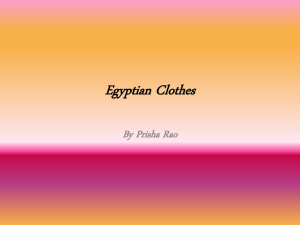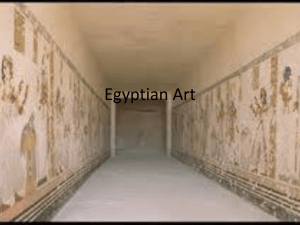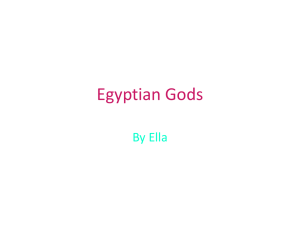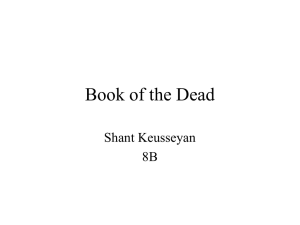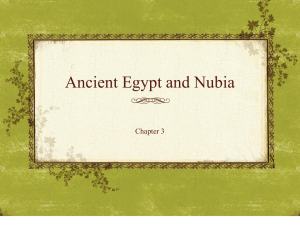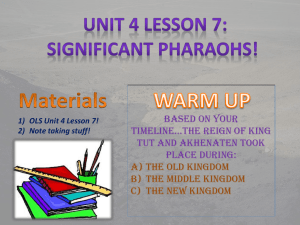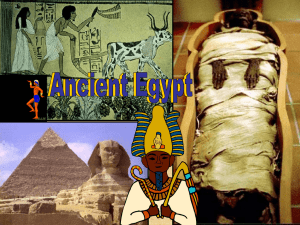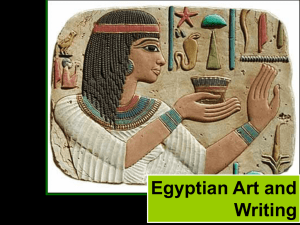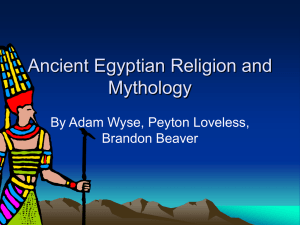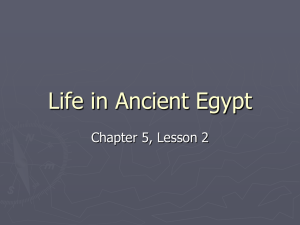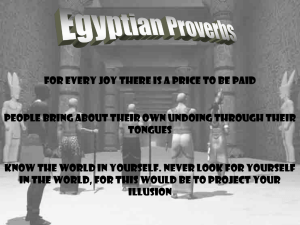Ancient Egypt - Firoda National School
advertisement
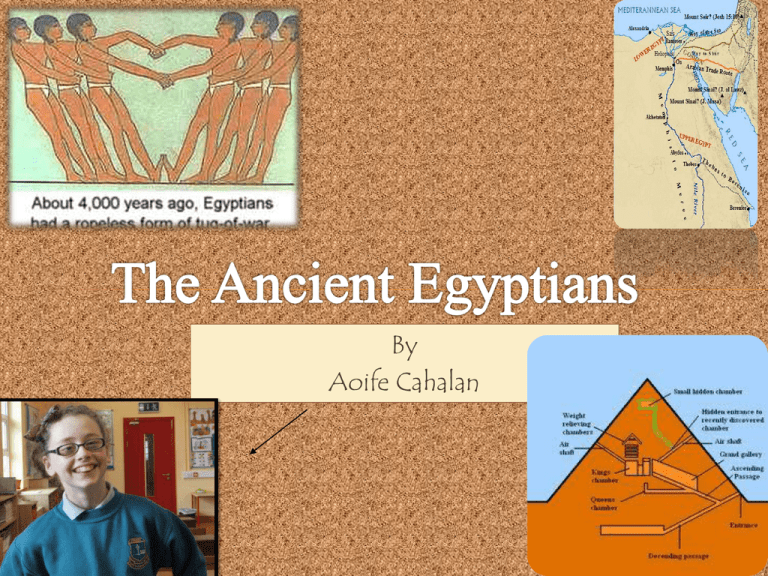
By Aoife Cahalan Ancient Egyptian culture was started in 5500 BC and then it ended in 30 BC with the death of Cleopatra VII, the last ruler of Egypt. It’s famous today for the great monuments which celebrated the triumphs of their rulers and honored their gods and their lands. The culture is often misunderstood to have been obsessed with death but that is not the situation they think there is a afterlife where everybody goes when they die. They also made an impression on Roman and Greek religions. A pyramid and the sphinx The Sphinx was built in 2500 B.C. The Sphinx is the body of a lion and the face of a man. It’s 57 metres long, 6 metres wide and 20 metres tall. It was built because Pharaoh Khafre wanted a building to protect his pyramid when he died. FOOD Archaeological excavations have revealed that workers on the Great Pyramids of Giza were paid in bread, beer, and onions apparently their customary diet as peasants in the Egyptian countryside. Beer disappeared as a mainstay of Egyptian life following the Muslim conquest of Egypt in the year 641 B.C, but onions remain the primary vegetable for flavoring in Egyptian food. Beans were also used for the mass of the Egyptian populace, as continues to be the case today. The Egyptian alphabet is different from the alphabet we have today. The egyptians thought that there wisdom was givin to then by the God Thoth. MUMMIES It was very important to Ancient Egyptian religious beliefs that the human body was preserved. A method of artificial preservation, called mummification was developed by the ancient Egyptians. Mummification was a complicated and lengthy process which lasted up to 70 days. The Egyptians believed in life after death. EGYPTIAN PYRAMIDS The Ancient Egyptians built pyramids as tombs for their pharaohs. The pharaohs were buried in pyramids of many different shapes and sizes. The three largest and best-preserved of these were built at Giza at the beginning of the Old Kingdom. The most well-known of these pyramids was built for the pharaoh Khufu. Inside of a pyramid The Egyptian pyramids were carried along the Nile with a material called shadoof [which is like a long metal bar]. The stones were then lifted and stacked to make a pyramid. EGYPTIAN INVENTIONS The first people to fuss over hair is the Egyptians. They would shave their hair when ever it grow too long. CLOTHING The Ancient Egyptians wore light clothes made from linen. Once harvested, the linen was soaked in water until soft. The soften linen was then separated into fibres which were beaten before being spun into thread which was then woven into cloth. The Egyptian cloths were made to keep Egyptian people cool and not to boil in the hot weather. MEN’S CLOTHING All men wore a wrap-round skirt that was tied at the waist with a belt. Sometimes the material was wrapped around the legs as well. The length of the skirt varied depending on the fashion of the time. Rich Egyptian men were able to afford the best quality linen which was very fine and almost see through. They also wore headdresses for special occasions. Peasant’s clothes Pharaoh's clothes WOMEN’S CLOTHING Egyptian women wore full length straight dresses with one or two shoulder straps.The dresses worn by rich Egyptian women were made from fine transparent linen. Like the men, rich Egyptian women decorated their clothes and wore jewellery and headdresses. GODS AND GODDESSES The ancient Egyptians believed in many different gods and goddesses. Each one with their own role to play in maintaining peace and harmony across the land. Some gods and goddesses took part in creation, some brought the flood every year, some offered protection, and some took care of people after they died. WHAT THE GODS REPRESENTED The Gods represented the land and sky. Others were either local gods who represented towns, or minor gods who represented plants or animals. The ancient Egyptians believed that it was important to recognize and worship these gods and goddesses so that life continued smoothly. NAMES OF SOME OF THE GODS Sekhmet , Ra, Hathor, Nut, Geb, Osiris ,Seth, Horus ,Isis, Thoth, Anubis, Ma'at Amun Bastt are all Egyptian gods and goddesses. They all have something in common they all take care of people and places. Anubis Ra CLEOPATRA Cleopatra VII was the last pharaoh of Egypt who did many thing during her rain because she was the youngest she wanted to be pharaoh so she murdered her brothers so she could be pharaoh. TUTANKHAMUN Tutankhamen was an Egyptian pharaoh of the 18th dynasty, during the period of Egyptian history known as the New Kingdom. He is popularly referred to as King Tut [ that’s what Tutankhamen was called by his people]. His original name, Tutankhamen, means "Living Image of Aten“. He became pharaoh when he was 9. He ruled 9 years until he died at the age of 18. In his tomb As a boy THE FINDING OF KING TUT The search for King Tut started when Howard Carter and his sponsor, Lord Carnarvon, spent a number of years and a lot of money searching for a tomb they weren't sure existed. In November 1922, they found it. Carter had discovered not just an unknown ancient Egyptian tomb, but one that had lain nearly undisturbed for over 3,000 years. Which was king tuts tomb. THE END OF ANCIENT EGYPT During the Late times Alexander the great concurred Ancient Egypt where they threw them out and started the Ptolemaic dynasty. Where they built : The Alexander lighthouse and Library of Alexander Thanks for listening to my powerpoint on: The Ancient Egyptians
